Genre: Tactical FPS
Publisher: Ubisoft
Developer: Ubisoft
Release Date: March 9, 2006
Buy 'GHOST RECON ADVANCED WARFIGHTER':
Xbox | X360 | PC | PlayStation 2
Hunt down the Evildoers and smoke 'em out from your couch…
Now I know what President Bush has been doing for the 20% of his presidency that he's spent on vacation. He's been playing early release builds of Ghost Recon: Advanced Warfighter. It would explain a lot of his word choices and decisions over the past six years, that's for sure. Anyhow, I can see why the guy's so stoked about GRAW. You see, I grew up on Rainbow Six, and Ghost Recon was a revelation for me when it was on PC. The methodical yet brutal nature of the gameplay was so compelling, and I was glad to get my troops outdoors and getting rounds downrange for real. I was crushed when GR2 skipped the PC, and I was dismayed at the mediocrity of GR2 on the consoles. When I saw preview material of Ghost Recon: Advanced Warfighter, however, I started to get a little nervous when I saw the game presented as a third-person shooter. Tactical shooters have to first-person to be tactical, right? Right? Wrong.
Here's the lowdown: GRAW is an action game centered on the ongoing Advanced Warfighter concept being developed in the U.S. Army. The premise is that as the nature of warfare evolves into a fast-paced, low-intensity urban affair, American soldiers need to stop thinking about sheer numbers and start thinking in sheer ability.
If you recall, the battle of Stalingrad from Call of Duty 1 and 2 saw hundreds of thousands of Germans and Russians slugging it out over 15 square miles of rubble, and in the end, about two million soldiers and civilians were left dead. The battle of Mogadishu, Somalia, in 1993 and the Battle for Hue City, Vietnam, in 1967 also saw modern mechanized infantry fighting in city streets, and both battles left both cities in ruins and with thousands of casualties. The Rangers in Somalia only suffered 18 dead and about 40 wounded, but U.S. and U.N. forces killed anywhere from 1,500-3,000 Somalis.
The point? The U.S. Army wants a soldier who can fight and survive in an urban theater and not have to level the place in the process. The idea evolved from the Land Warrior model to the Advanced Warfighter concept and has seen the introduction of Unmanned Remote Controlled Vehicles (UAVs) and the Striker wheeled vehicle for transport and direct fire support. Components of the Advanced Warfighter concept bestow the grunt of the ground with: a centralized and localized communications system with near-real-time updates from the chain of command, modular body armor that not only lets you survive being shot but also lets you fight on, and smaller and lighter rifles that are mission adaptive and modular to allow for a variety capabilities.
So how does this relate to the game? GRAW supposes that by 2013, these various systems are in place, coordinated, and acting in conjunction with an evolving urban battlefield devoid of front lines and clear-cut opposition. In GRAW, you take on the role of Special Forces Captain Scott Mitchell, who leads a team of three other SF troopers into the threatening arena that is Mexico City to rescue the President after he's been abducted by a dastardly coup d'etat. (Okay, so it sounds a little far-fetched.) You get to select from a roster of riflemen, gunners, grenadiers and/or marksmen, and you have access to assets like UAV drones, Strikers, and Blackhawk gunships to support your maneuvers and assaults. The game's narrative unfolds primarily in-game, and cut scenes are kept to a minimum. After-action reports are also minimized so as not to interrupt the game's flow. The overall story plays out like a grand martial epic where only you can save the day, but interspersed is some authentic and tense gameplay.
Storyline aside – and it is a good story for an action game – GRAW really achieves its merit elsewhere. It makes a bold departure that is also quite simple; moving the camera to third-person view conjures all sorts of logistical problems when it comes to camera management, but once GRAW gets going, you can see exactly why the designers made this choice. No matter the game, first-person perspective cannot really replicate peripheral vision. To a soldier, your periphery is where the guy that gets you is standing. He blends into the background haze while you focus down your sights, and he hits you three times before you even know you're about to die. GRAW's choice of moving the camera back and above your shoulder allows you to see that periphery, and the wide-screen format makes peripheral vision real and replicates a better sense of situational awareness.
To make matters even better, your soldier will conform to cover in a most useful way. The days of sidestepping out of cover to shoot and sidestepping back into cover are gone. You, like a real soldier would, lean out of cover, and you do so without having a "lean" button to press. The gameplay is contextual so when you reach the edge of cover, you can aim, and Mitchell will pop his head out so you can take your shot. The camera allows you enough view to judge your shot before you expose yourself so you can get out and back in before you get your head taken off (even at normal difficulty, your foes can tag you in the face easily). Another amazing function is the simple fact that you can switch the camera's bias. Normally, you're on the soldier's right shoulder, but come around the corner to the left and you can switch the camera's bias to now sit on the soldier's left shoulder, which gives you a clearer picture of where you're going and what you see. This effectively eliminates any possible blind spots that would be unfairly created by your soldier's model.
GRAW's gameplay speed is rather fast. You need to be on your fingertips, so to speak, but don't expect a Quake 4 or even a COD 2 pace. Relatively speaking, GRAW moves at the same clip as a basset hound compared to those greyhounds. Even so, things deteriorate quickly in GRAW and get tricky because of the burden of command. There are a lot of things to manage while GRAW is in action. You have your squad to maneuver and order, and if you're not careful, they'll get themselves exposed and be left out to be flanked. You have to gather and analyze real-time intel on the fly with the picture your drone feeds you. Mission objectives are constantly changing as each mission progresses. Assets come and go into your possession, and if you get gunship support, then you need to call down the thunder on specific points. It takes some getting used to, and timing is essential because the game doesn't pause while you check your map. If a soldier gets hit, then you only have so much time to revive him, but if he's gone, then he's gone for good.
At this point, my only criticism about GRAW is information overload. The directional pad serves as your means of delivering orders to different assets. The face buttons function differently, depending on whether they're tapped or held. I found switching between grenades extraneous because you have to hit B to switch to grenades, then hit and hold B to switch from frags to smoke. Switching between modes of fire or from rifle to grenade launcher was also equally time-consuming and awkward. What happened to the tried-and-true method of cycling through each option with a button press? On the other hand, precise aiming is easy with the left trigger, and shooting with the right makes use of some auto-adjustment, but it's not quite as egregious as Halo. Some rifles will let you use a scope with various levels of zoom, and if you hold the left trigger while using the scope, you can hold your breath to steady and focus your aim. Using the trigger again was logical because the left trigger is all about aiming, and it doesn't interfere with your aim the way clicking the left analog stick for COD 2's breath control did.
On the visual side of things, GRAW brings the goods by using the Powell Doctrine's decree of overwhelming force. The game opens impressively as you look over the urban sprawl that is Mexico City. While perhaps not the most compelling location, Mexico City serves as a worst-case scenario for urban warfare. The metropolis is huge and spread out, with loads of construction and unknown modifications made to the layout, which make fighting street to street a nightmarish prospect to an already dicey proposition. The opening sequence serves as a warning to those who observe: Get ready because this city will eat you alive. You can't even see the city limits, and none of it is pre-rendered; this is all real-time.
Once you get boots on the ground, you find yourself in an architecturally complex environment that is both realistic and interesting to maneuver around. The lighting is bright and washed out as it is around noontime in Mexico City, with the blazing hot sun. Heat shimmer realistically warps your vision, and light reflects off of surfaces and dazzles the eye if you stare into the sun. The lighting is so effective that this place doesn't just look hot – it feels hot. Texturing is hi-resolution and bump mapped and normal mapped; the character models even look stellar for DOA 4 standards. Uniforms crease and crinkle the right way, and gear dangles and hangs from your shoulders in a realistic fashion. Bad guys look generic, but watching them slump over or dangle and fall realistically is very satisfying.
GRAW also uses surround sound to immerse you in the action. Directional sound relates to you in terms of where the fighting is, as well as people shouting. The visual cues of being shot at are not as potent as the auditory ones, which again is a nod to realism. The voice acting is competent, even though your S-2 officer sounds a little too surfer cool. Distinct voices for your soldiers also lend more character to your people, even if they lack biographical data and characterization.
As awesome as GRAW's single-player campaign is, multiplayer is even better. Xbox Live is the perfect format and forum for getting into some serious action that is tracked and ranked. GRAW multiplayer is certainly not lacking for options. You can use all of the campaign maps for multiplayer, and there are some dedicated multiplayer maps that cater to game sizes 6 to 16. It doesn't sound like much, but eight versus eight is cause for some serious firefights. You can use all four soldier classes, and each class confers certain advantages, but you can turn these advantages on or off with just about everything else. More than just the "no grenades" or "pistols only" settings, you can actually limit specific weapons or weapon sub-systems or ammo types. Multiplayer modes are expansive. You have elimination, with half a dozen sub-modes; territory, with three different types; operations; and co-op. Co-op is not available for rankings, as you team up with three other players to work your way through AI-infested maps, but the others also boast solo and team types. Playing solo bounty-hunter is always tense, and a good Hamburger Hill territory fight is constantly ebbing and flowing while a helicopter gunship mows down the team that doesn't own the hill. Playing defense during a siege territory makes for a quiet intensity while you wait for the attackers to reveal themselves.
Certain gameplay elements are taken out of multiplayer portion to allow for smoother gameplay. You can't use cover the same way you can in single-player, but I can see why. Having the server calculate shots while you're using cover would clog up latency. In all honesty, not being allowed to use cover the same way isn't too much of a loss, since the tradeoff is a really fast-playing multiplayer match with 16 players. You can still use remote drones to give you an idea of where the enemy is, and this can be a crucial strategic tool.
 All in all, Ghost Recon: Advanced Warfighter is what "next-gen" ought to be. It embodies gameplay, graphics, multiplayer and style that we were expecting to see from the Xbox 360. Simply put, GRAW rounds out the total package. I am quite surprised that a title this polished and refined is out and running for the X360 so early in the console's life cycle. Compare GRAW to any other shooter for the Xbox, X360, or PS2, and they will wilt. This is what next-gen gaming could and should be, and Ubisoft has reason to be proud of this gem, as I would mark it among the most impressive X360 games produced and an instant classic that every X360 owner should add to his or her library.
All in all, Ghost Recon: Advanced Warfighter is what "next-gen" ought to be. It embodies gameplay, graphics, multiplayer and style that we were expecting to see from the Xbox 360. Simply put, GRAW rounds out the total package. I am quite surprised that a title this polished and refined is out and running for the X360 so early in the console's life cycle. Compare GRAW to any other shooter for the Xbox, X360, or PS2, and they will wilt. This is what next-gen gaming could and should be, and Ubisoft has reason to be proud of this gem, as I would mark it among the most impressive X360 games produced and an instant classic that every X360 owner should add to his or her library.
Score: 9.5/10
More articles about Ghost Recon Advanced Warfighter


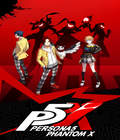
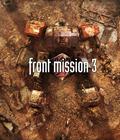

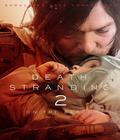

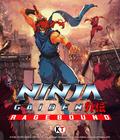
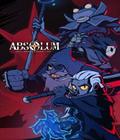
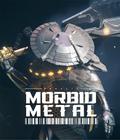

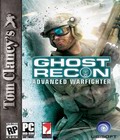 In Ghost Recon Advanced Warfighter, players will embody Captain Scott Mitchell as he commands the Ghosts and Special Forces allies equipped with the IWS in the quest to save the president of the United States, recover stolen nuclear codes and eliminate a vicious band of renegade soldiers hell-bent on unleashing catastrophe. The game unfolds entirely in Mexico City, where numerous, meticulously researched and detailed environments will deliver complete immersion into the future of urban warfare. Ghost Recon Advanced Warfighter will also include multiplayer and cooperative gameplay with exciting new elements, continuing the Ghost Recon tradition of setting the bar for multiplayer action.
In Ghost Recon Advanced Warfighter, players will embody Captain Scott Mitchell as he commands the Ghosts and Special Forces allies equipped with the IWS in the quest to save the president of the United States, recover stolen nuclear codes and eliminate a vicious band of renegade soldiers hell-bent on unleashing catastrophe. The game unfolds entirely in Mexico City, where numerous, meticulously researched and detailed environments will deliver complete immersion into the future of urban warfare. Ghost Recon Advanced Warfighter will also include multiplayer and cooperative gameplay with exciting new elements, continuing the Ghost Recon tradition of setting the bar for multiplayer action.














































